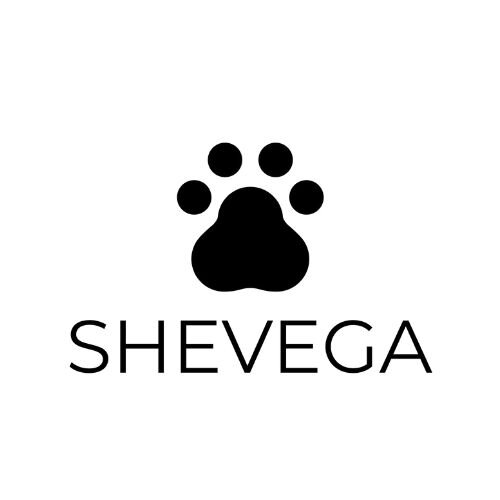What are the health issues that SHEVEGA can help with creating custom diet plans?
SHEVEGA Supplements are the ONLY vet nutritionist formulated supplements available today that can be used daily for the conditions set out below:
1. Liver Shunts and Liver Insufficiency
2. Ulcerative Colitis, pancreatitis and IBD
3. Intestinal and skin allergies, no allergen, elimination diet
4. Chronic kidney disease
5. Heart Problems
6. Urinary stones/crystals formed in acidic urine and for Dalmatians
7. Certain health conditions that (may) require Keto diets
“Our dog Topaz was diagnosed with kidney disease two years ago. She had previously been on a low-fat diet after having pancreatitis years earlier. Our regular vet recommended several prescription vet foods that did not work for her (from ID to KD, ZD, WD, JD, TD...)…Since starting with SHEVEGA Supplements -Topaz has been healthy and energetic and her blood levels have been generally stable..”
—Elizabeth A (Australia)
-
SHEVEGA: It is the abnormal connection of veins in the liver, where the liver function to detoxify ingested toxins is compromised.
Breeds predisposed to this condition: eg, Cairn terriers, Yorkshire terriers, Maltese.
Signs: Neurological signs, like pressing the head on the walls, and circling occurs due to the toxic ammonia negative influence on the brain.
Treatment: Surgical closure of the shunt. Some shunts cannot be surgically treated.
The goal is: to reduce toxic ammonia production by reducing dietary protein to a minimum required, and by choosing the specific type of protein. Dietary management is essential for managing liver disease. Only feeding a VET NUTRITIONIST FORMULATED SPECIALISED HOME-MADE DIET FOR LIVER SHUNT can suppress the destructive brain neurological symptoms.
What is the best commercial food for LS: There is nothing that can compare with the owner-prepared vet formulated diet.
What are the key nutritional factors: Decrease ammonia production by using highly bioavailable, scientifically proven source of protein, highly digestible carbohydrates, and good quality fat. Omega 3 oils, preferable Algae based and coconut oil are beneficial.
Research: Foods containing soybean meal averted encephalopathic (neurologic) signs in dogs with liver shunts.
Vegetable protein sources have produced best results. Recommended is tofu, highly digestible soy protein. The amino acid composition of tofu is not significantly different from that of meat sources.
(Center et al, 1997; Thompson et al, 1986; Schaeffer et al, 1986)
-
NB: NO COMMERCIAL FOOD IS RECOMMENDED FOR THIS CONDITION.
What is UC (Ulcerative colitis): Inflammation of large intestines with ulcers formed in its internal layer. Toxins, mainly ammonia damage mucosal, inner layer cells of the intestines causing painful colon ulcerations. Excess of dietary protein causes large amount of urea production in the liver. Urea crosses the cell membranes, enters the colon where bacteria convert it to toxic ammonia.
Breeds predisposed to this condition: Boxer, French bulldog, German shepherds.
Signs: Haemorrhagic (bloody) diarrhoea, constipation, painful defecation, painful rectal ulcers.
Treatment: Sometimes surgical intervention of the external ulcers can help to some extent.
The goal: Dietary Intervention-Reduce ammonia production by choosing the optimal protein source, avoid commercial food.
Commercial food choice: none specifically available as an optimal option.
Key nutritional factors: Highly digestible protein, low fat, Polyamines (tofu), Nucleotides.
Research:(Funk, Martha A. and David H. baker. 1991. Effect of fibre, protein source and time of feeding on methotrexate toxicity in rats. Journal of Nutrition 121: 1673-1683). (Center, 1996 b) The importance of dietary protein source.
-
What is behind the many inflammations of gastro-intestinal (GI) system: The early age weaning of puppies with commercial diet, means that low quality protein is ingested which causes damage to the internal layer (mucosa) of the intestines.
Later in the adult age, the ingestion of high levels of ammonia forming proteins further increases intestinal permeability. Allergens from diet, and toxic products from intestinal bacterial activity promote allergy and endotoxemia, that is the spread of toxins into the blood and later to different organs, including the skin.
Dietary antigen (allergen) is suspected to play a role in pathogenesis (disease) of intestinal and consequently skin inflammations.
In 15 different studies, skin lesions that are associated with adverse reactions to specific food, beef was the number one allergen in 69% of the reported cases in dogs, and 25% of the reported cases in dogs it was caused by lamb meat. (Elwood et al, 1994; Walton, 1967; Carlotti et al, 1990; Jeffers et al, 1991).
Signs: Signs will appear up to 24 hours after feeding. Skin reaction (hives and itchy rash-urticaria) can happen 5 days after feeding. Signs are vomiting, constant or intermittent diarrhoea (incl. soft stools), gas, dehydration, pain and bloating of the abdomen. When allergens cross the intestinal barrier signs are showed on skin, coat, and other organs.
The goal: prevent allergenic food, prevent developing of oral intolerance at the weaning stage of puppies by feeding with large amount of low digestibility and low-quality protein source, like meat meal in commercial puppy food.
Commercial food choice: Hydrolysed protein in non-allergenic commercial food can be a good option. To avoid different additives added in commercial food, it is recommended that the home-made food option is provided. Food additives in commercial food can potentially cause adverse reactions in pets. Example: azo dyes, non azo dyes, sodium glutamate, sodium nitrate and propylene glycol (Fuglsang et al, 1994).
Key nutritional factors: It is recommended that a diet includes highly digestible, potentially no allergenic source of protein, low fat and highly digestible carbohydrates, fibre (soluble and insoluble). Avoid feeding gluten. In diarrhoea, bicarbonates are lost so alkaline food is recommended.
Research: Omega 3 oils are found beneficial in chronic inflammatory colitis (Simopoulos, 2002; Barbosa et al, 2003)
Mc C. Arthur, K.E.,J.H. Walsh, and C.T. Richardson, 1998. Soy protein meals stimulate less gastric acid secretion and gastric release then beef meals. Gastroenterology 95:920-926
Mc Cormack, Shirley A. and Leonard R. Johnson. 1991. Role of polyamines in gastrointestinal mucosal growth. American Journal of Physiology (Gastrointestinal Liver Physiology 23): G 795-G806.
-
What is dilated heart problem: stretched and weakened heart muscle can no longer maintain normal circulation, transport of oxygen and nutrients to organs. Due to the sodium and water retention in the lungs and abdomen, the blood pressure can be increased.
Breeds: Depending on the cause, it has been noticed that taurine deficiency in common cause in old dogs, carnitine deficiency in Boxer, Doberman pincher, American cocker spaniel. Carnitine deficiency cannot be diagnosed by testing the blood but only by checking the content of Carnitine in the heart muscle.
Signs: Cough, distended abdomen, low energy, loss of muscles, low appetite.
The goal: Reduce sodium (salt in diet) and decrease the retention of fluids.
Key nutritional factors: Potassium and magnesium can be depleted so it is important to have them in supplements and food.
SHEVEGA supplements and the Home-made Diet plans ensure that there are the right quantities of Taurine, Carnitine and essential fatty acids in the prepared food. Taurine can be lost during food processing, which involves high temperatures, mincing and freezing in commercial dry and canned food, and raw patties. Carnitine is sensitive to high temperatures. No matter what food is consumed, your dog could have Taurine and Carnitine deficiencies, so SHEVEGA supplements are necessary in ANY diet.
Research: Freeman, L.M.,J.E.Rush, A.K.Calahane. 2003’Dietary patterns in dogs with cardiac disease.” J Am Vet Med Assoc 223: 1301-1305.
-
What is CRF: It is a condition where the kidney function of clearing sodium, phosphorus, and other electrolytes, toxins, and waste products from protein metabolism is decreased.
Signs: increased drinking and urination, vomiting, high blood pressure, body weight loss
Goal: is to minimise the renal workload by decreasing the amount of waste product of dietary protein (ammonia). Prevent dehydration, ensure that there is always plenty of water available.
Commercial diet options: Top brands vet prescribed wet and dry renal food. Ask your vet for recommendation.
Key nutritional factors: Preventative low sodium and phosphorus diets. Provide alkalising source of protein. Provide Magnesium and potassium, the absorption of which can be low, so provide in food and supplements.
Feed at least 50% homemade-SHEVEGA diet for early renal stages in adult dogs where the Phosphorous level in the blood is still normal.
Research: Brown, Scott A.1994. Canine renal disease. In The Waltham Book of Clinical Nutrition of the Dog and Cat, edited by J. M. Wills and K.W. Simpson, 313-334 Oxford: Pergamon press.
-
What bladder stones are formed in acidic urine: The urine/kidney stones that are formed in acidic urine, explained here, are calcium oxalate crystals (from calcium and oxalates), urate crystals (from ammonium urate and uric acid in urine) and cystines (due to cystine accumulation in urine). Calcium oxalate crystals are dependent on the food containing calcium and oxalates. Urate crystals are common in Dalmatians, due to the genetic problems with liver. Any other dogs with liver diseases are prone to forming urate crystals. Cystine calculi form in dogs that have a genetic predisposition for excess urine excretion of these crystals.
Signs: Difficult, frequent urination and painful urination and when the complete obstruction happens. Lethargy, painful and enlarged bladder, vomiting and inappetence (loss of appetite), blood, and infection in urine.
The goal: Prevention with diet management. Increase drinking to reduce urine concentration. The preferred pH of urine is 6.5. In dogs prone to any of the mentioned urine crystals urine pH is ideally between 6.5-7.
Commercial food choice: Commercial urinary, vet prescribed diets, for these specific urinary stones (crystals) are recommended. They are contraindicated in chronic kidney and heart failure. As an ideal diet option use SHEVEGA vet formulated diet as the only food or in combination with your vet recommended top brand commercial food.
Key nutritional factors: Most of the time crystal/stones tend to form after the surgical removal, so constant diet management is important as a prevention.
Give lots of fluids. SHEVEGA vet formulated diets given 100%, or in 50-50% combination of recommended SHEVEGA specialised homemade diet with SHEVEGA supplements and Commercial urinary, vet prescribed diets, for these specific urinary stones (crystals) are recommended.
Diets rich in taurine (red meat and offal) will normally have high level of purines (the source of urates and uric acid) that should be avoided in food. Proteins that are low in purines are also low in Taurine. The proteins of choice are low in purines, Taurine is supplemented by adding SHEVEGA supplements.
Research: (Lulich et al., 1992), (Senior, David E 1992)
-
Text to come.




